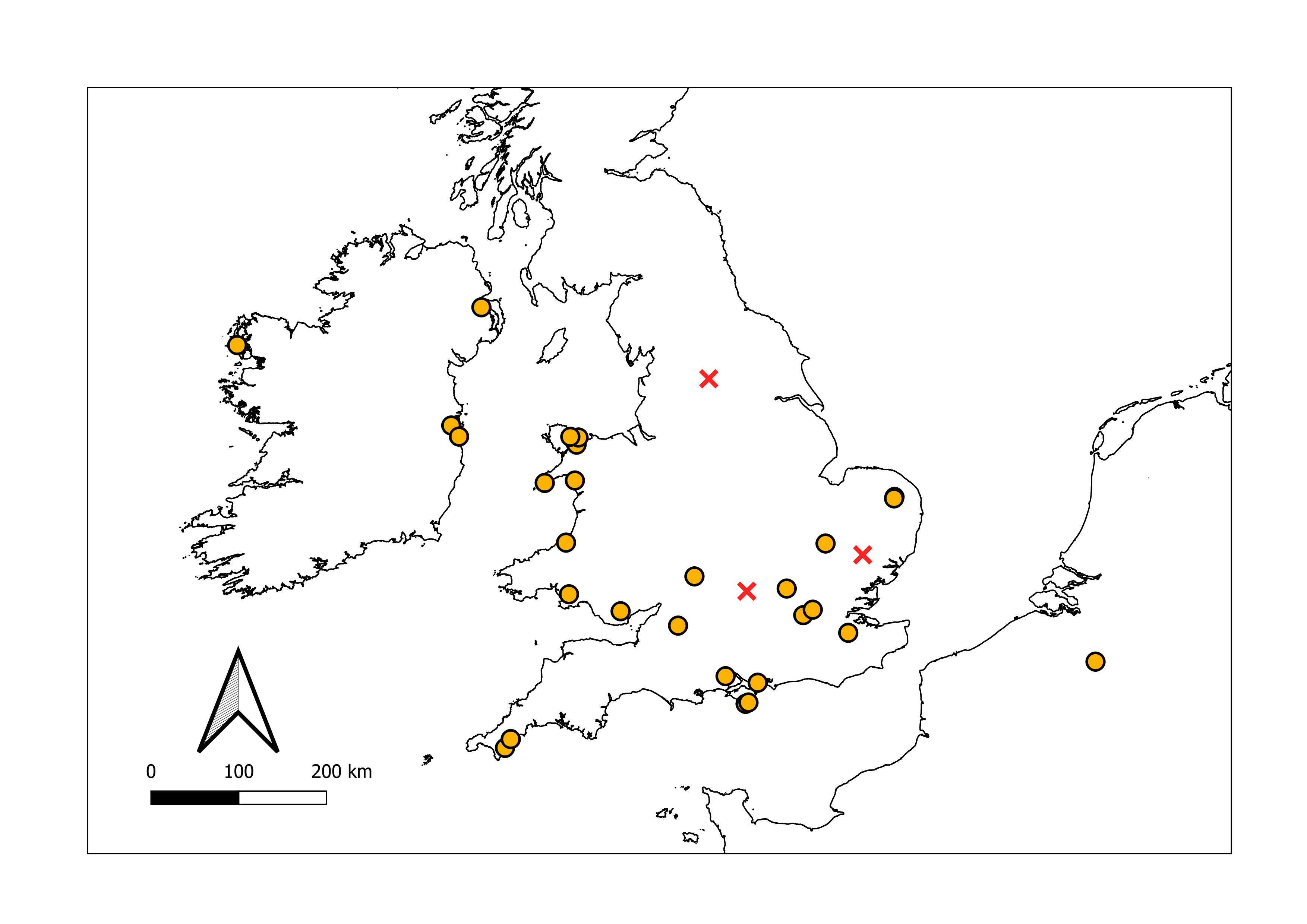


Once you get your eye in, you will begin to notice pathogens all around you. Urban habitats like pavements and brownfield sites can be great places to explore and find common species. Some of the most common urban plants are host to quite obvious and easy to find species. One thing about pavement plants is that there are often many different species in the same family that can be found together (e.g. there are many, many different pavement plants in the Brassicaceae). For that reason I have arranged many of the pathogens here by host family.
Commonly found on Asteraceae; it is ubiquitous on Groundsel Senecio vulgaris. It stands out on pavement plants, forming large orange patches of aecia on the leaves and stems, and causing the stems to twist.
Another very common species on Groundsel Senecio vulgaris in pavements, this oömycete forms white pustules on the leaves. It can often be seen infecting the same plant as Puccinia lagenophorae (right).
This is a complex of oömycetes that infect plants in the Brassicaceae. The nominate species, Albugo candida sensu stricto, infects Shepherd's Purse Capsella bursa-pastoris (below). Several other species can be split by host but most of them are undescribed and should be recorded as complex Albugo candida.
The three species that can be easily split by host are:
On several hosts including Shepherd's Purse Capsella bursa-pastoris and Aubrieta (the garden bedding plant). On Arabidopsis it requires microscopy to distinguish it from A. laibachii1.
On Hairy Bittercress Cardamine hirsuta in pavements and flowerbeds.
On Lady's Smock Cardamine pratensis (and C. amara) in lawns and amenity grassland. N.B. in most databases (including GBIF and iNaturalist) this is called A. leimonios, but this is incorrect as the gender does not agree.
Very common. Round brown spots with black pycnidia. The spots may become a bit indistinct as the leaf ages and starts to die. Sometimes this species takes a bit of searching to find and it is worth taking a closer look at any large patch of the host.
This undescribed species is somewhat common on the host plant wherever it is found. Look for orange pustules on the undersides of the leaves. Sometimes the upper side of the leaf is yellowed. Sometimes only a single leaf in a large patch is symptomatic. So far it is known from Britain, Ireland, and Belgium. Originally discovered by Chris Preston2.

This is very common on pavement plants in Britain, but there are not very many Irish records. The small, sap-sucking bugs live inside the folded over leaf galls.